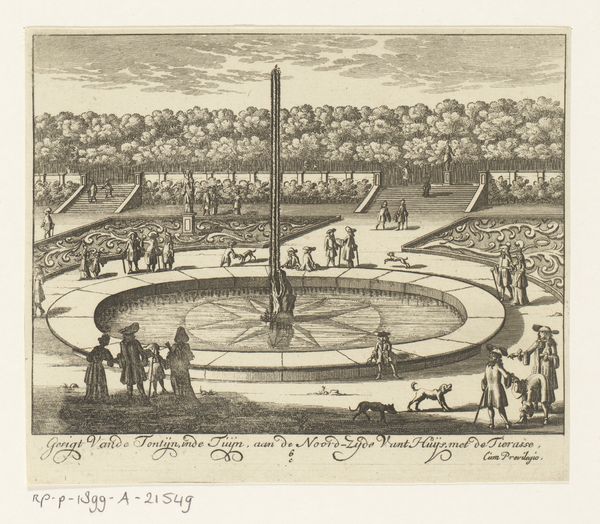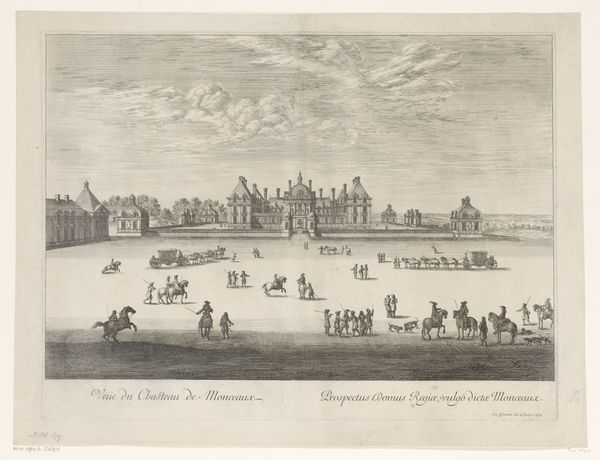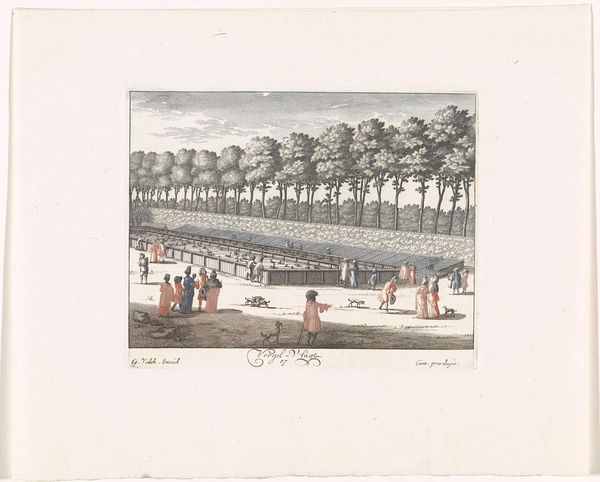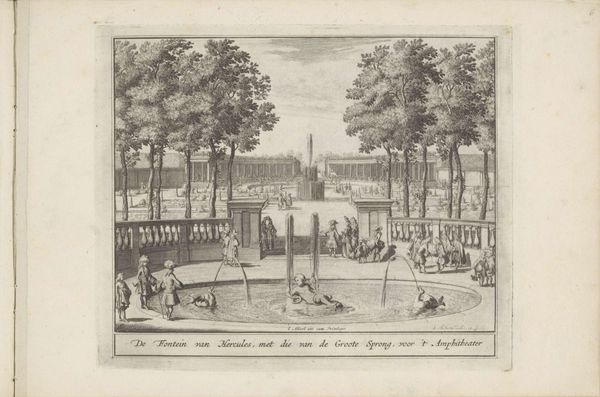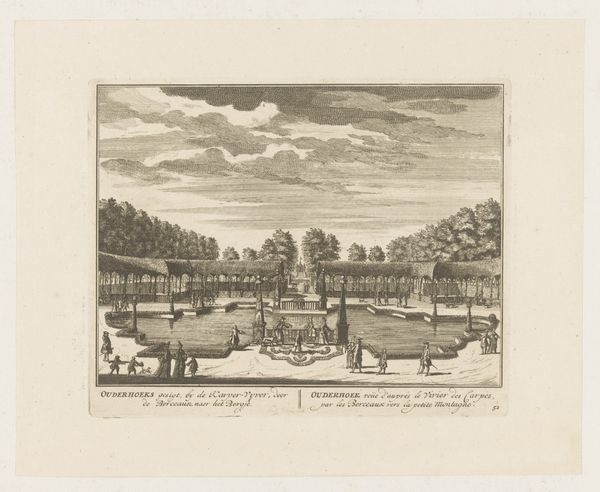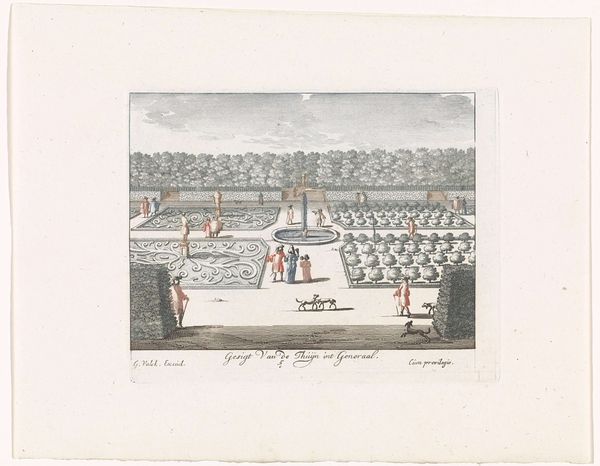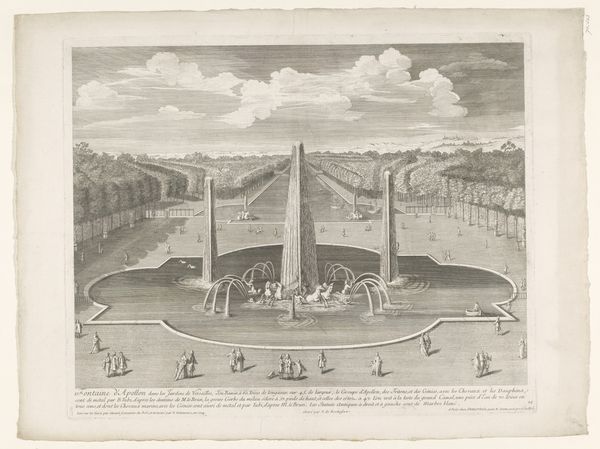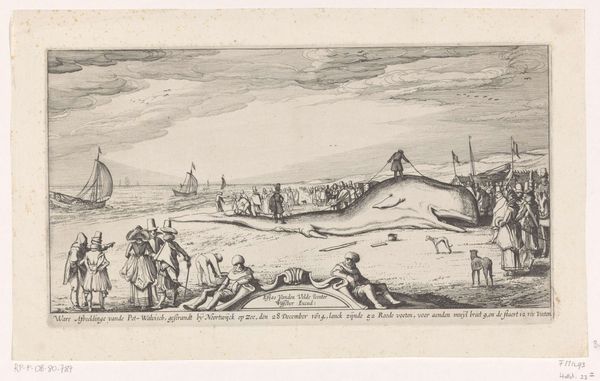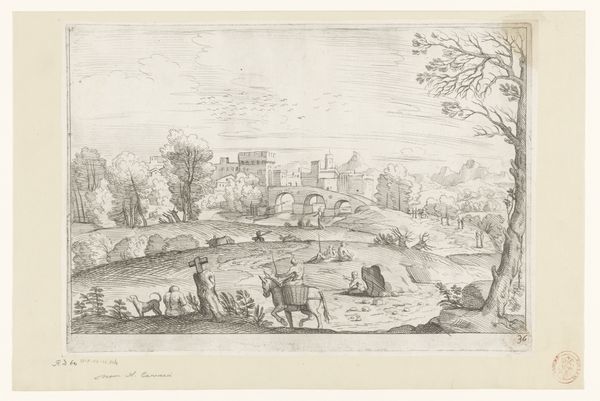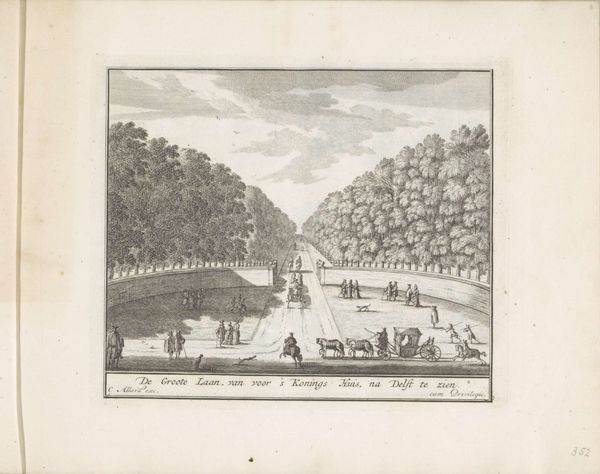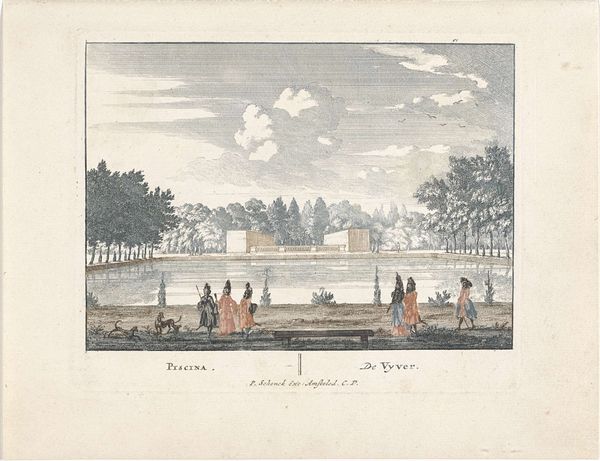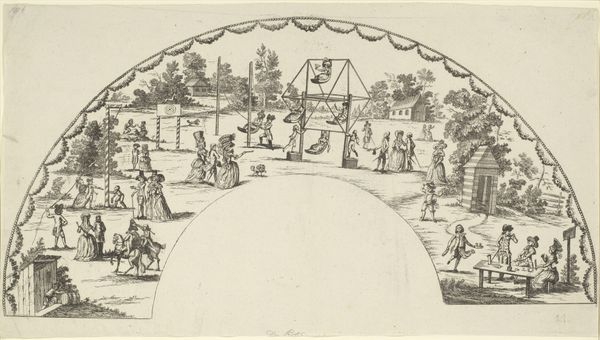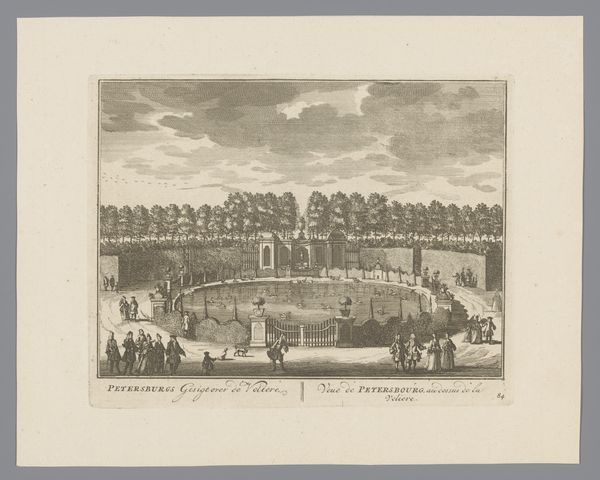
print, engraving
#
baroque
#
ink paper printed
# print
#
landscape
#
cityscape
#
engraving
Dimensions: height 134 mm, width 168 mm
Copyright: Rijks Museum: Open Domain
Editor: Here we have an engraving titled "Fountain and terraces on the north side of Soestdijk Palace," dating back to 1695. The image has a pleasing formal quality with its precise lines. What does it bring to your mind? Curator: It’s a fascinating visual document of power. Consider what a garden like this signified in the late 17th century. It's not just about aesthetics, is it? It’s a display of wealth, control over nature, and therefore, political power. Notice the highly structured layout, the imposing fountain. These elements are carefully constructed to project an image of authority and sophistication. Who was meant to see this, and what message was intended? Editor: So it's like a propaganda piece in a way, even if subtle? Showing off power to other royals or nobles? Curator: Precisely! Think of it in relation to absolutist regimes of the time. Landscaping and gardens became tools for reinforcing the idea of an ordered society, where everything – even nature itself – was subject to the ruler's will. And disseminating this imagery, through prints like this, extended that message beyond the immediate circle of visitors to the palace. The print functions almost as a social media post of its time, doesn't it? Editor: That’s a really interesting point. It makes me consider how carefully orchestrated every aspect of these displays must have been, right down to how they were visually represented for public consumption. Curator: Absolutely. The artist is not merely documenting reality; they're crafting a carefully mediated version of it, one designed to reinforce particular ideological messages about social order. Even the act of engraving – of creating multiples – democratized power, distributing an ideal, though of course only to those with means to acquire the prints. Editor: It really changes how I see this image now – not just as a pretty landscape, but as a deliberate statement of power in a very specific cultural and political context. I hadn’t considered its role as a tool of propaganda. Curator: Indeed, these visual landscapes hold much more than initially meets the eye!
Comments
No comments
Be the first to comment and join the conversation on the ultimate creative platform.
